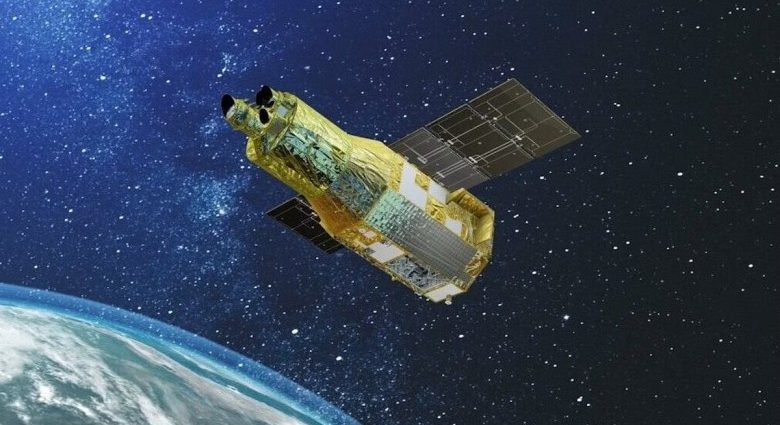The successful landing of India’s Chandrayaan-3 spacecraft near the south pole of the moon has got the Japanese excited about the Lunar Polar Exploration (LUPEX) Mission scheduled for 2025 and the Smart Lander for Investigating Moon (SLIM) mission, which may be launched as soon as August 28.
LUPEX – a collaboration between Japan and India with participation from America’s NASA and the European Space Agency (ESA) – will search for the water that is believed to exist in the same region that Chandrayaan-3’s Vikram lander and Pragyan rover are now exploring.
The Japan Aerospace Exploration Agency (JAXA) and the Indian Space Research Organization (ISRO) have devised the LUPEX mission to gather data on the quantity and form of water resources on the moon “in order to determine the feasibility of utilizing such resources for sustainable space exploration activities in the future.”
“In the last few years, the analysis of observational data has suggested the existence of water in the polar regions of the Moon,” JAXA writes. “At the lunar north and south poles where the Sun angle is low, there exist so-called ‘permanently shadowed regions’ (PSRs) that do not receive sunlight for long periods of time. As example of a PSR would be an area that is lower than the surrounding ground, such as the inside of a crater.”
“Recent observational data suggests that it is highly likely that water does not sublimate [vaporize] at such locations, and remains near the lunar surface,” JAXA continues. “However, the details about the water quantity, distribution and its form are still a mystery.”

To solve this mystery, JAXA established the “Lunar Polar Exploration Pre-Project Team” in January 2020. Its goals were to:
- Develop a comprehensive management plan for the collaborative mission with ISRO
- Investigate the spacecraft system requirements and the various interface specifications in collaboration with ISRO
- Clarify the rover system requirements in preparation for the system requirements review
- Clarify the development specifications for the observational instruments to be developed by JAXA
- Develop concept designs for the Lunar Polar Explorer system and related systems.
- Investigate the landing point
“Through acquiring knowledge on the Moon’s environment“ JAXA seeks “to gain insight into how water on the lunar surface evolved to its present state. Understanding how water is retained by planetary bodies is important for the prospect of future human exploration beyond the Earth.”
LUPEX will rely on a launch vehicle and rover made in Japan and a lander made in India. The launch vehicle will be the new H3 rocket developed by JAXA and Japan’s three leading aerospace contractors – Mitsubishi Heavy Industries (KHI), Kawasaki Heavy Industries (KHI) and IHI Corporation (formerly Ishikawajima-Harima Heavy Industries). The rover is being developed by JAXA and MHI.
The mission will carry several scientific instruments:
- Resource investigation water analyzer (JAXA), which consists of
- Lunar thermogravimetric analyzer (JAXA)
- Triple reflection reflectron (JAXA)
- Aquatic detector using optical resonance (JAXA)
- Sample analysis package (ISRO)
And also:
- Advanced lunar imaging spectrometer (JAXA)
- Ground penetrating radar (ISRO)
- Mid-infrared imaging spectrometer (ISRO)
- Neuron spectrometer (NASA)
- Exospheric mass spectrometer (ESA)
These instruments should be able to detect potential water resources as far as 1.5 meters beneath the lunar surface and determine their composition. Chandrayaan-3’s less sophisticated Vikram and Pragyan are designed to investigate the composition of the lunar surface and to record seismic activity.
SLIM, Japan’s Smart Lander for Investigating Moon, is paired with an X-ray Imaging and Spectroscopy Mission (XRISM). Both are currently scheduled to be launched on an H-IIA rocket from the JAXA Tanegashima Space Center on August 28. SLIM’s mission is to land a small light-weight vehicle on the moon with pinpoint accuracy.

SLIM and XRISM was scheduled to be launched in 2021 but technical and other problems forced postponement. This month’s launch has already been delayed from August 26 due to bad weather, but the reserved launch period runs through September 15 so it should be attempted soon.
Nevertheless, a space launch is a risky endeavor. India’s previous Chandrayaan-2 mission failed when its lander and rover crashed on the moon in September 2019. The HAKUTO-R probe launched by Japan’s ispace (a private sector lunar exploration company) in December 2022 crashed into the moon in April 2023.
Israel’s Beresheet spacecraft also crashed on the moon in April. Russia’s Luna-25 failed to enter lunar orbit and crashed earlier this month. The first flight of Japan’s H3 rocket was aborted last March after its upper stage failed to ignite.
India has become the fourth nation to make a soft landing on the moon after the USSR, the US and China. Japan is likely to be the fifth. And Indian Prime Minister Modi said that “India’s successful moon mission is not just India’s alone.”
This success “belongs to all of humanity, and it will help moon missions by other countries in the future. I am confident that all countries in the world, including those from the Global South, are capable of achieving such feats. We can all aspire for the moon and beyond.”
After last April’s crash, ispace CEO Takeshi Hakamada told the news media “We consider it a huge accomplishment that we were able to obtain data all the way to [just before the failed] landing, and a big step forward for the next mission.”
One Japanese newspaper quoted a professor of aerospace engineering as saying that “Japan has only one shot” at the moon. In fact, though, the upcoming SLIM launch will be the second try –and, if it fails, there will no doubt be a third.
Follow this writer on Twitter: @ScottFo83517667

